Unblocking a kitchen sink
The following sequence shows a good course of action for unblocking a kitchen sink. However, it is always best to try and stop blockages occurring in the first place. Most blockages can be avoided by using items like plug strainers which will catch unwanted food crumbs so that they do not accumulate in the kitchen waste pipes. Fat and oil can also collect in pipes if you pour excess down the sink – they simply settle, solidify and cause problems that are easily avoided if you recycle fats in another way. Below are straightforward options for removing blockages when they do occur.
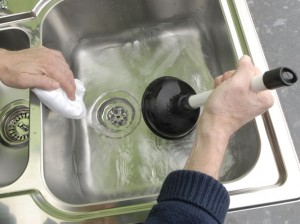 |
1. Where water is not draining away in a sink, position a plunger over the plughole and hold a rag over the overflow. |
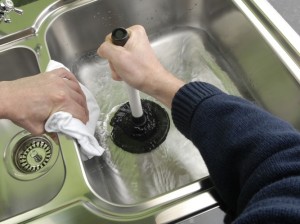 |
2. Move the plunger up and down and at the same time keeping the overflow covered. The vacuum you create should dislodge the blockage. |
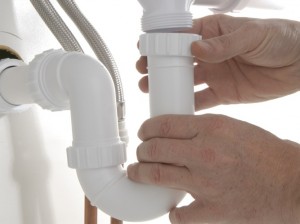 |
3. If the plunger fails, unscrew the sump section of the trap underneath the sink. Make sure there is a bucket below to catch the overflow. |
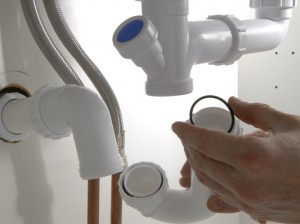 |
4. Remove any debris that has been causing the blockage from the trap and reposition, making sure that any rubber washers are positioned correctly. |
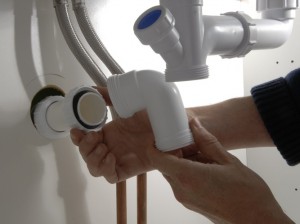 |
5. If you don’t find a blockage in the sump, you will need to dig deeper, so unscrew the main part of the trap to give access to the waste pipe. |
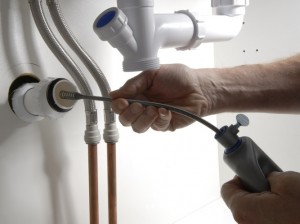 |
6. Use an auger to burrow into the waste pipe. First pull out a length of auger from the drum – a 1m length is normally long enough. Tighten the retaining nut on the body of the auger so that the length you will be pushing through the waste system is held firm. Push the auger into the pipe and turn the handle so that the end can twist through, dislodge the blockage and break it up. |
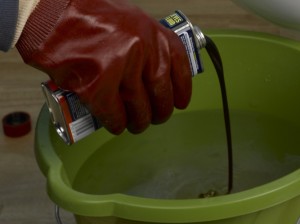 |
7. When the blockage has been cleared, reassemble the trap and disinfect all equipment using a household disinfectant. Follow the manufacturer’s guidelines carefully. |
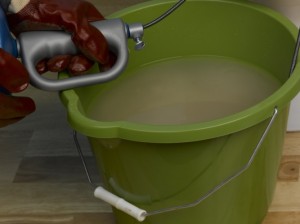 |
8. Soak the tools as directed, rinse thoroughly and allow to dry before packing away. Allow the auger coil to dry thoroughly before winding it in. |
Unblocking a sink tips
- A dishwasher will work more efficiently and the pipes will stay clearer if dishwasher filters are regularly cleaned.
- Check gullies outside regularly to make sure that they are not getting blocked with leaves or any other debris.
- Different plunger designs are now available. The traditional cup design works well, but a hydraulic design will pump a jet of water into the waste pipes to dislodge the blockage.
- Waste disposal units easily cause blockages if not operated exactly to a manufacturer’s guidelines. Pipes must be flushed through as recommended in order to keep them clear.
- Prevent blockages by not washing DIY tools in the sink unless all excess material has been removed. This is especially the case with adhesives, fillers and plasters, as they can easily settle and solidify in the waste pipes. Its much better to wash up in a bucket in the garden.
- Chemical cleaners are another for unblocking a kitchen sink. However, never use a chemical cleaner with a plunger – take all precautions and check, and double-check, usage recommendations.
